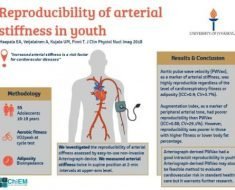Standard lifestyle interventions that offer benefits for most overweight patients with diabetes may in fact present a higher cardiovascular risk to a subset of patients with poor glucose control, according to new research underscoring the need to consider subgroups in the management of the type 2 diabetes population.
“Although the interest in diabetes subgroups is growing, our study is one of the first to apply it to lifestyle intervention,” said first author Michael P. Bancks, PhD, an assistant professor of public health sciences at Wake Forest School of Medicine in Winston-Salem, North Carolina, in a press statement.
As expected, the detangling of patient characteristics from a previous randomized trial showed responses may vary significantly among subgroups — in this case those with poor glucose control, Bancks told Medscape Medical News.
“Clinicians with patients who resemble those in the high glucose control subgroup may consider alternative strategies, such as newer glucose-lowering medications, or other adaptive approaches before recommending an intensive lifestyle intervention,” he advised.
The results are from a new analysis of the National Institutes of Health Action for Health in Diabetes (Look AHEAD) randomized trial, from 2013, published this month in Diabetes Care.
Intensive Lifestyle Intervention Reduced CVD Events for 85% of Those in Trial
The trial originally showed that a 10-year intensive lifestyle intervention focusing on weight loss and physical activity among people with diabetes who were overweight or obese was successful in reduction of weight, and in improvement of glucose control and cardiovascular risk factors.
However, no significant benefits — or risks — in terms of cardiovascular events were observed in the intervention group compared with a control group, which received only diabetes support and education.
With evidence since that time underscoring potential treatment response differences in type 2 diabetes subpopulations, Bancks and colleagues revisited the 2013 study, looking see if outcomes differed among the 5145 participants in regard to four conditions known to be important in diabetes development or progression: older age at diabetes onset (42% of the sample); poor glycemic control (14%); severe obesity (24%); and younger age at onset (20%).
In the original trial, the differences in clinical risk factors were equally distributed among the intervention groups.
Over a median follow-up of 9.4 years, there were 821 cardiovascular events in the study.
Among the subgroups, contrary to the study’s original overall conclusions, as many as 85% of participants in the lifestyle intervention arm had a lower risk for cardiovascular events, specifically the older age at onset, severe obesity, and younger age at onset groups, compared with the control arm.
Conversely, the poor glucose control subgroup had an 85% higher risk of having a major cardiovascular event over the follow-up period compared with the control group (hazard ratio, 1.85).
Of note, the differences in the poor glucose control group did not emerge until year 3 and did not include the individual outcome of death.
“Contrary to the initial findings of Look AHEAD, our work found that lifestyle interventions reduced potential cardiovascular harm and optimized benefits for 85% of those in the trial,” Bancks said.
“However, for those who had poor blood sugar control, lifestyle intervention increased the risk of major cardiovascular events,” he reiterated.
Weight Loss, Physical Activity Still Standard Recommendations
The Look AHEAD intervention had a goal of achieving and maintaining weight loss of at least 10%, and with their overall results — plus those from a multitude of other studies — showing that weight loss is beneficial, the approach remains a standard recommendation of the American Diabetes Association for overweight and obese individuals with type 2 diabetes.
However, since the time of Look AHEAD, research has shown important heterogeneity in the type 2 diabetes population according to an array of factors including underlying genetic risk, clinical features, and the risk for complications, with a heightened awareness of targeted treatment and prevention approaches.
Bancks noted that the researchers indeed theorized that older age might have also been linked to a higher risk for CVD events.
“Prior to starting the study, we hypothesized that the older age at diabetes onset subgroup and the poor glucose control subgroup both would have higher risk for cardiovascular events from the intervention,” he told Medscape Medical News.
“So it was pleasantly surprising that we did not observe harm from the intervention for the older age at diabetes onset.”
Mechanisms Linking Intervention to CVD Risk
The mechanisms of how the intervention could increase the higher cardiovascular disease risk in the poor glucose control group are not well understood.
In terms of the physical demands of the intervention, Bancks noted that all participants in the Look AHEAD trail were required to complete an exercise test at baseline, indicating that they could exercise safely.
The authors speculate instead that the risk could be related to wide swings in glucose, with a notably high A1c level at baseline (greater than 9%) that well exceeds standard targets for glycemic control, followed by a large drop during the first year of the intervention, and then an increase in glucose levels in the intervention group back to levels similar to the control group.
“This is speculation, but the increase in risk for cardiovascular disease may have to do with the large swing in A1c level,” Bancks said. “We are doing follow-up work to assess this question.”
The study received support from the National Institute of Diabetes and Digestive and Kidney Diseases. The study authors have disclosed no relevant financial relationships.
Diabetes Care. Published March 2021 edition. Abstract
For more diabetes and endocrinology news, follow us on Twitter and on Facebook
Source: Read Full Article





